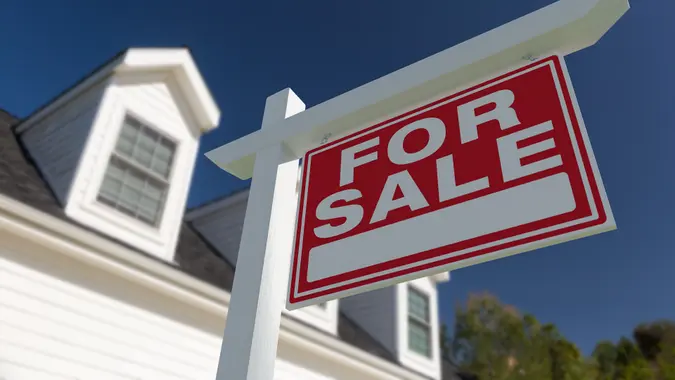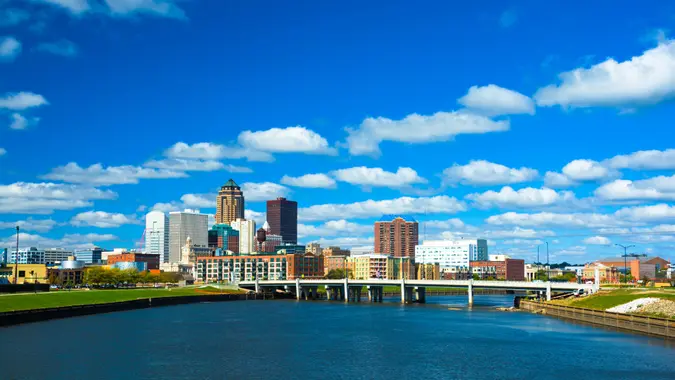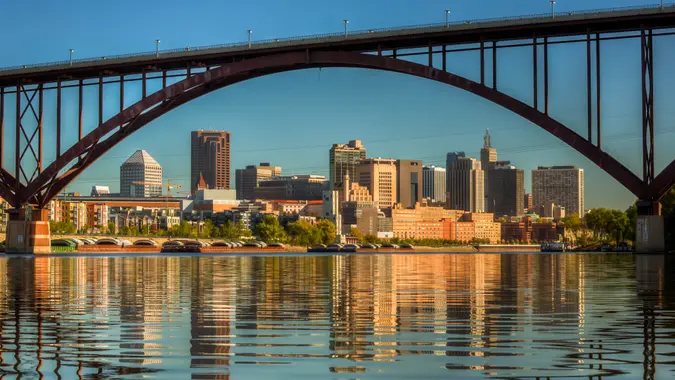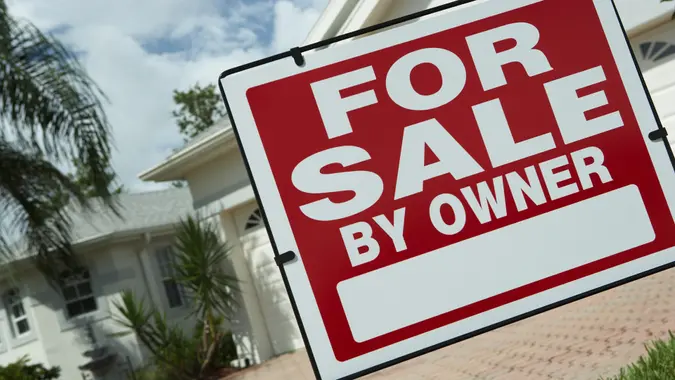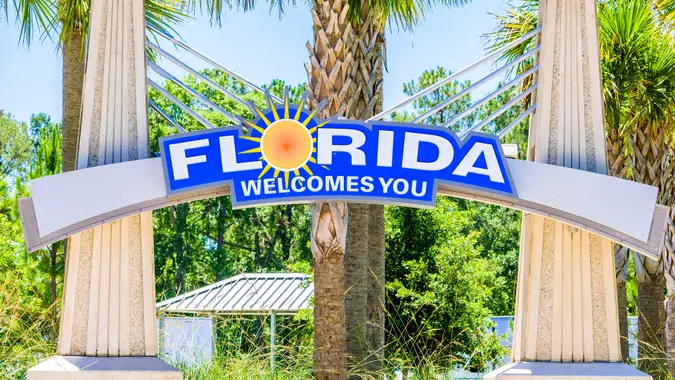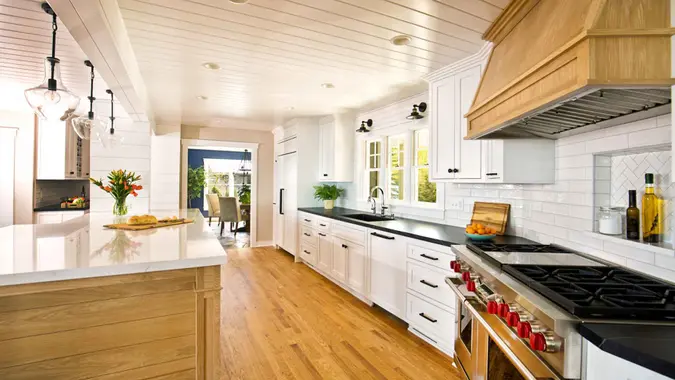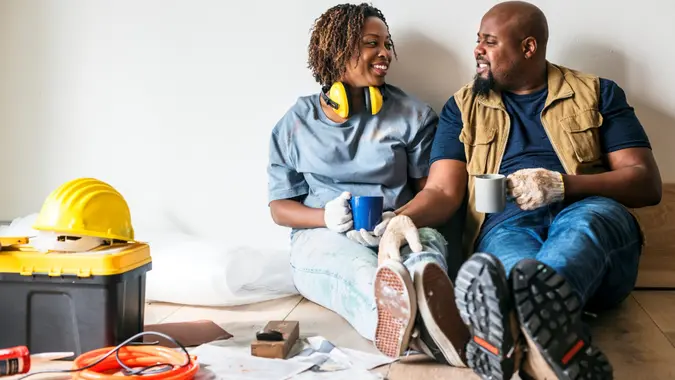Live in a Falling Housing Market? Here’s How To Protect Your Home’s Value
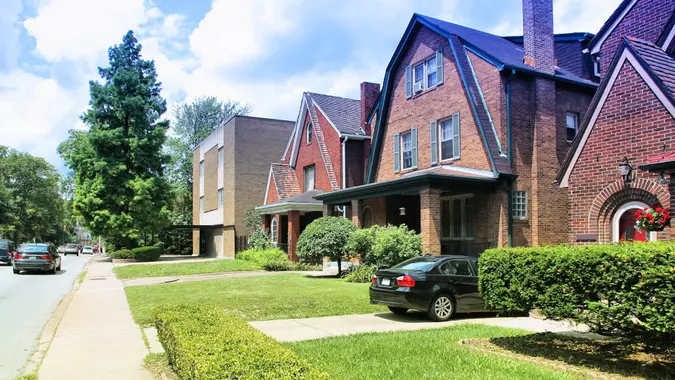
Commitment to Our Readers
GOBankingRates' editorial team is committed to bringing you unbiased reviews and information. We use data-driven methodologies to evaluate financial products and services - our reviews and ratings are not influenced by advertisers. You can read more about our editorial guidelines and our products and services review methodology.

20 Years
Helping You Live Richer

Reviewed
by Experts

Trusted by
Millions of Readers
In today’s uncertain economic climate, it’s impossible to predict what’s coming for the housing market in the rest of 2024 and beyond. Interest rates are still high — will they keep rising, hold steady or even start declining?
Overall inflation is finally slowing down, but housing hasn’t been a part of that so far. In fact, according to the U.S. Bureau of Labor Statistics’ Consumer Price Index, the “shelter” category has been a major contributor to the rise in cost of living in recent months.
If you live in an area where home prices are falling or are just concerned that a down market may be on the way, you may be wondering what you can do to protect the value of your home. The good news is that you do have options. Here are some tips from experts about how to fight against price depreciation in your home.
Enhance Curb Appeal
Curb appeal — the attractiveness of a property when viewed from the street — is an important factor in the perception of value.
“First impressions matter, especially in a declining market,” said Denis Smykalov, broker at Wolsen Real Estate. “Boosting your home’s curb appeal can attract potential buyers and maintain interest in your property. Consider tasks such as landscaping, fresh exterior paint or replacing the front door. These relatively affordable updates can make a significant difference.”
Estimated costs:
- Landscaping; $1,000 to $5,000
- Exterior paint; $2,000 to $5,000
- Front door; $500 to $3,000
Focus on Energy Efficiency
Another way to keep your home’s price stable is to make upgrades to its energy use. Not only will this help protect value, it will also reduce your utility bills and save you money.
“Investing in energy-efficient upgrades not only reduces utility bills but also appeals to environmentally conscious buyers,” Smykalov said. “Consider upgrading insulation, installing energy-efficient windows or replacing outdated appliances. These improvements can increase your home’s desirability and potentially mitigate market declines.”
Estimated costs:
- Insulation; $1,500 to $2,500
- Energy-efficient windows; $3,000 to $10,000
- Appliance replacement; $500 to $3,000
Renovate Key Rooms
Strategically updating key parts of your home can have an immediate impact on its value.
“Focus on high-traffic areas such as the kitchens and bathrooms,” Smykalov said. “Upgrading countertops, cabinets, fixtures and appliances can make your home more appealing to potential buyers.”
Estimated costs:
- Kitchen renovation; $10,000 to $30,000
- Bathroom renovation; $5,000 to $20,000
Keep Up on Maintenance
Renovated kitchens and bathrooms can be valuable because they are so visible, but investing in the parts of your home that protect it from the elements and structural damage might do more to maintain its value.
Scott Orich, agent at Flyhomes, said, “For preventing depreciation … it’s more about maintaining the integrity of your home, which is far less glamorous. For example, replacing a roof. This isn’t the most exciting project aesthetically, but addressing a potentially failing roof before it becomes an issue will save you a ton of money in the long run and prevent the huge depreciation hits that come from water damage.”
Continuing on the theme of protecting your home from costly damage, you could look at re-siding your home.
“Like a roof, siding is your home’s exterior protection to the elements,” Orich said. “Siding breaks down over time though, and failing to address access points where water could get in means rotting to a home’s framing, and now we’re talking structural and big money.”
Estimated costs:
- Roof replacement; $12 to $14 per square foot (asphalt shingle)
- Re-siding; $10,000 to $25,000 (or more, varies by home size and design)
Get Professional Help
The value of a home, and the best strategy to protect that value, will vary — and it might be very different depending on the state, city, neighborhood or even the block that it’s located in.
If you don’t know where to start, consider reaching out to a professional for help.
Ben Waterman, co-founder and COO of Strabo, said, “Real estate agents or consultants can provide valuable insights, market analysis and negotiation expertise to help navigate the challenging market conditions and protect your home’s value.”
It’s not easy to navigate a downtrending market, especially if you’re planning on selling in the near future. But, if you formulate a strategy and take action now, you can protect your home’s value in any environment and make sure you get the best possible price.
More From GOBankingRates
 Written by
Written by  Edited by
Edited by 



